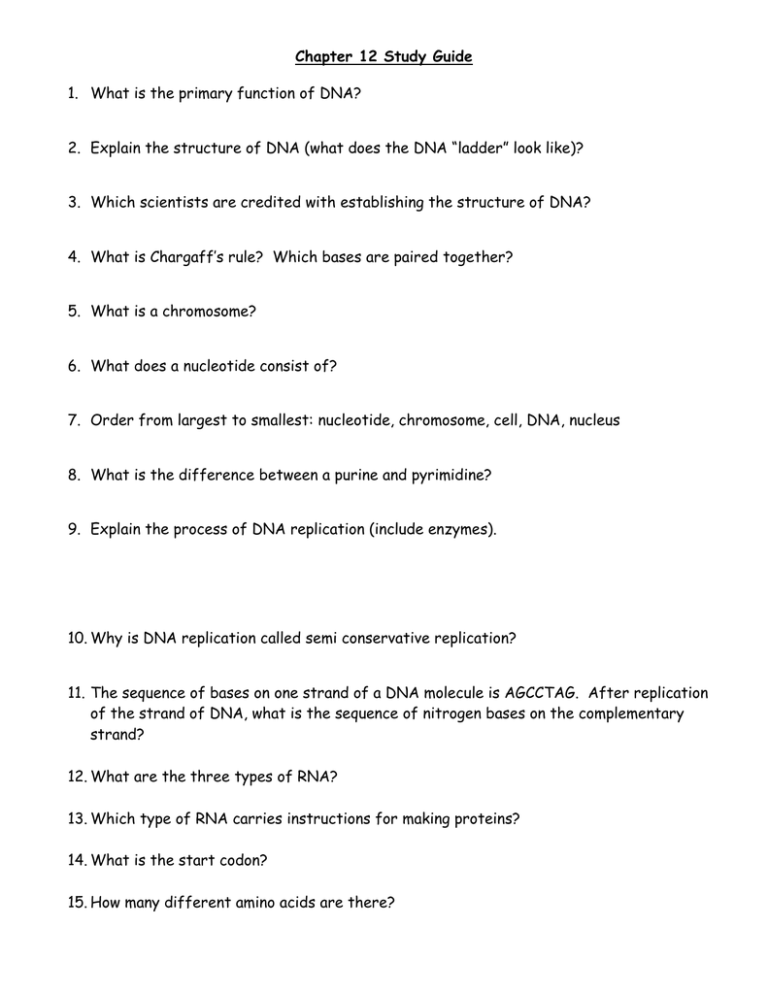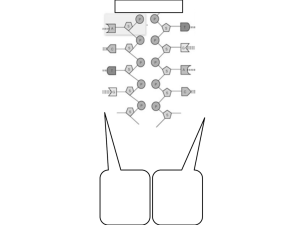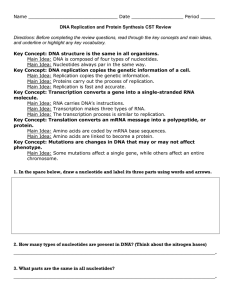Chapter 12 Study Guide
advertisement

Chapter 12 Study Guide 1. What is the primary function of DNA? 2. Explain the structure of DNA (what does the DNA “ladder” look like)? 3. Which scientists are credited with establishing the structure of DNA? 4. What is Chargaff’s rule? Which bases are paired together? 5. What is a chromosome? 6. What does a nucleotide consist of? 7. Order from largest to smallest: nucleotide, chromosome, cell, DNA, nucleus 8. What is the difference between a purine and pyrimidine? 9. Explain the process of DNA replication (include enzymes). 10. Why is DNA replication called semi conservative replication? 11. The sequence of bases on one strand of a DNA molecule is AGCCTAG. After replication of the strand of DNA, what is the sequence of nitrogen bases on the complementary strand? 12. What are the three types of RNA? 13. Which type of RNA carries instructions for making proteins? 14. What is the start codon? 15. How many different amino acids are there? 16. Explain transcription. Where does it take place? 17. Explain translation. Where does it take place? What is its purpose? 18. How is RNA different from DNA (list three differences)? 19. Each codon is linked to how many amino acids? 20. What is the series of amino acids encoded by this piece of mRNA? mRNA: CUCAAGUGCUUC 21. The anticodons for the codons in the mRNA above are? 22. Explain the central dogma (DNA to RNA to Protein). 23. How is the shape of a protein related to its amino acid sequence? 24. Which class of biological molecule includes enzymes and the structures that determine most observable traits in living things? 25. What is the function of tRNA? 26. Explain gene regulation in a eukaryotic cell. 27. What is a mutation? 28. Are the effects of a mutation always harmful? Explain. 29. Original gene: TTGACTCGGTATAC Mutant gene: TTGACTCGTATAC What type of mutation is this? What is a possible cause of this mutation?







